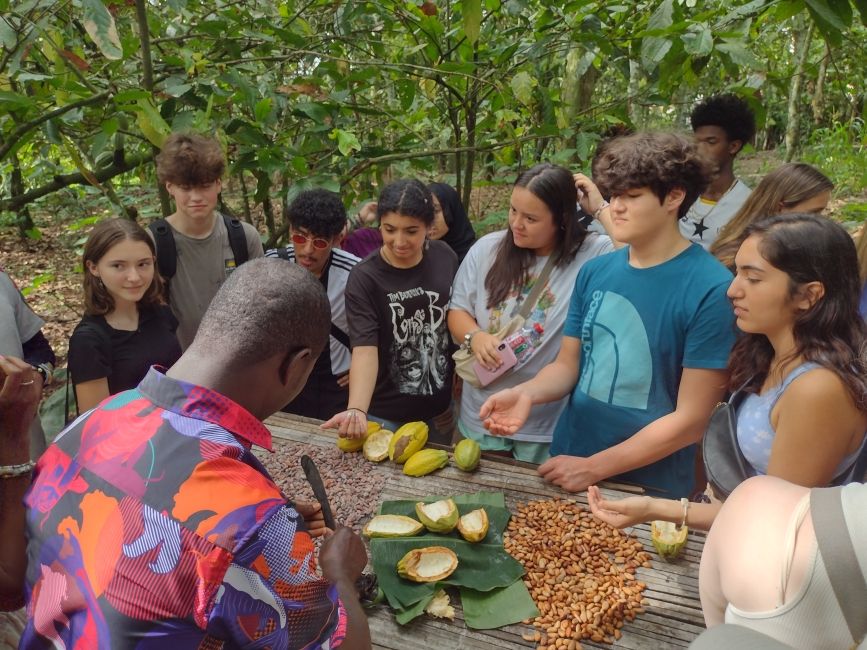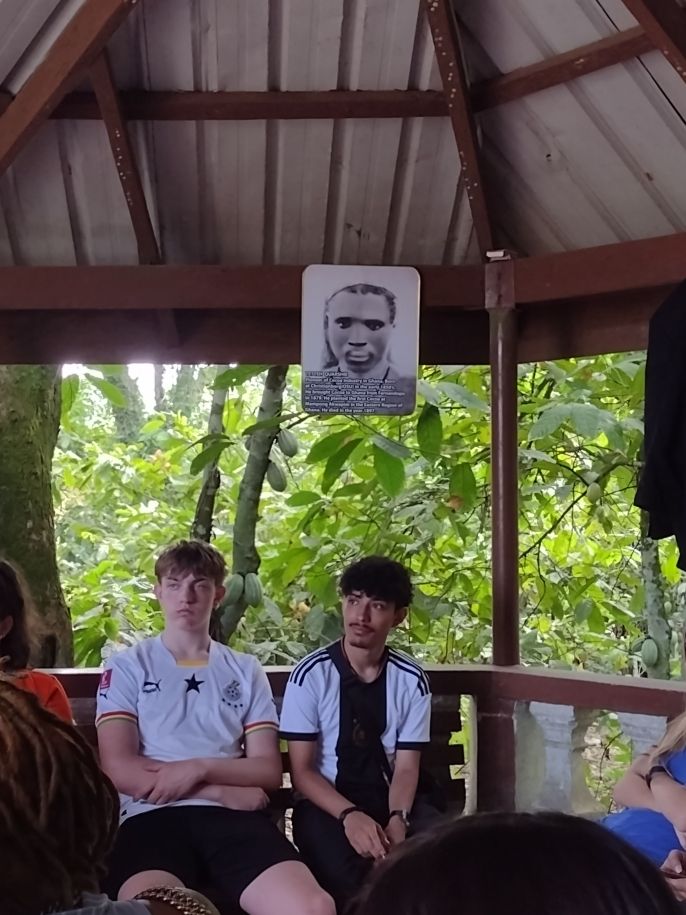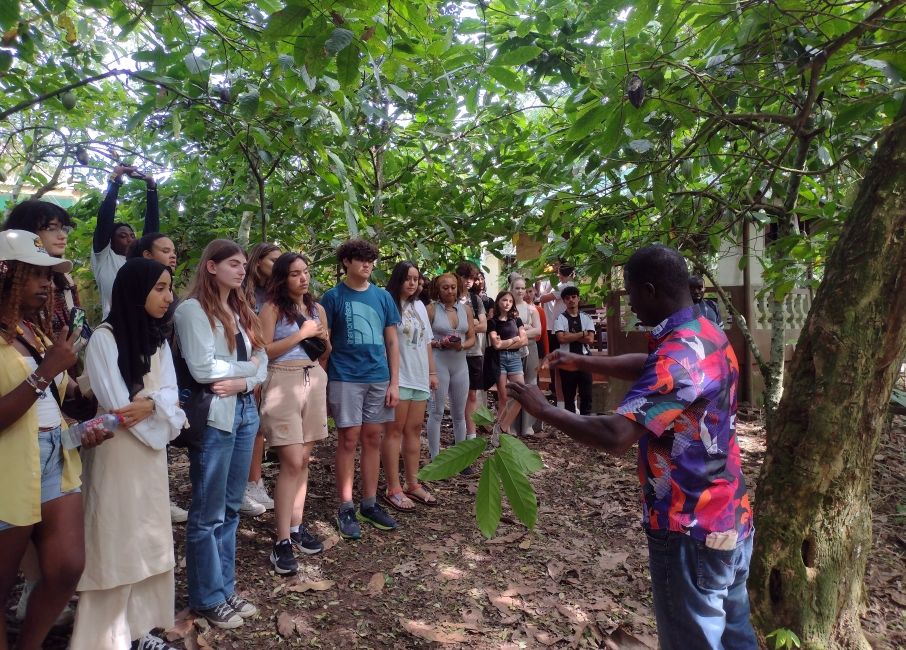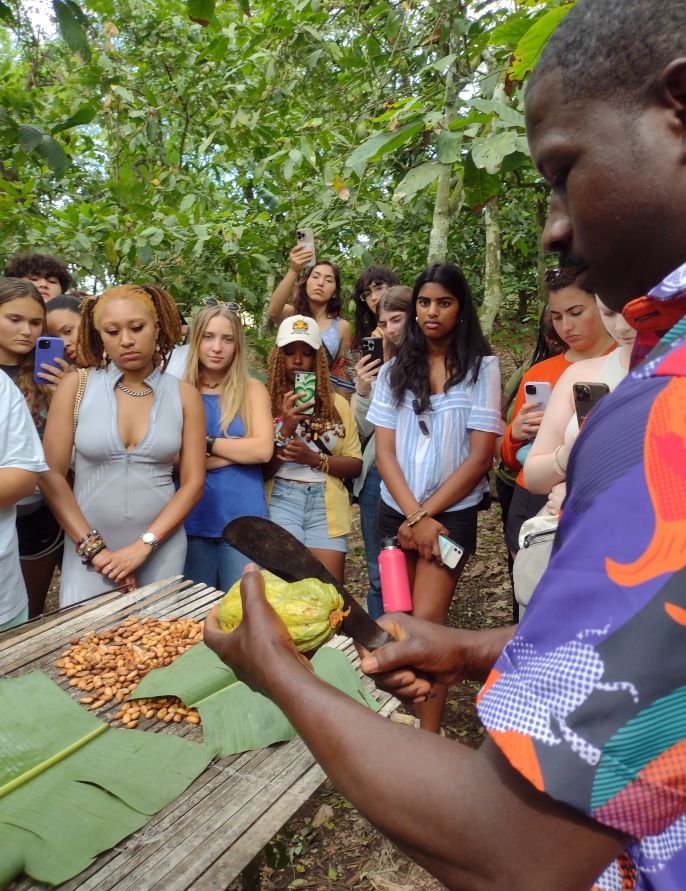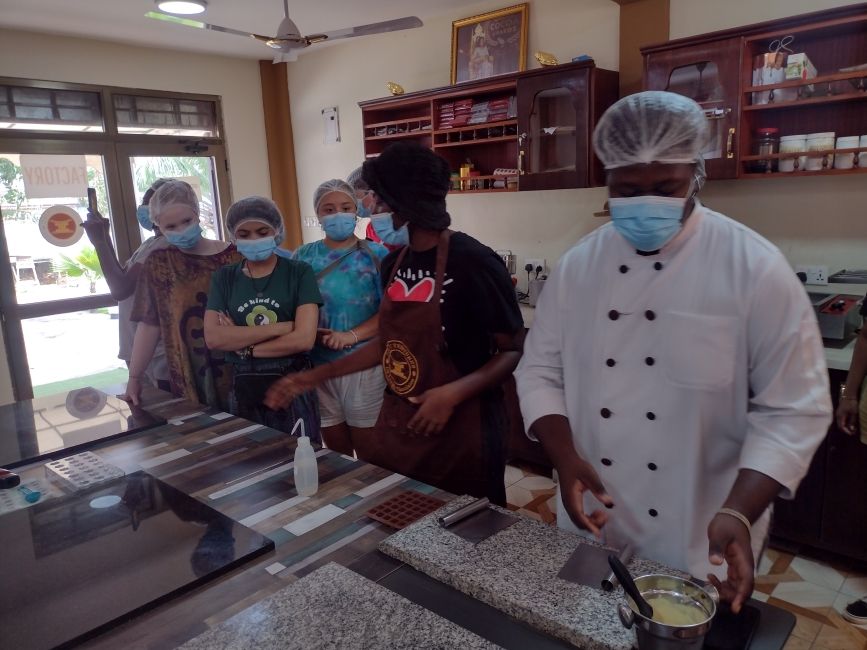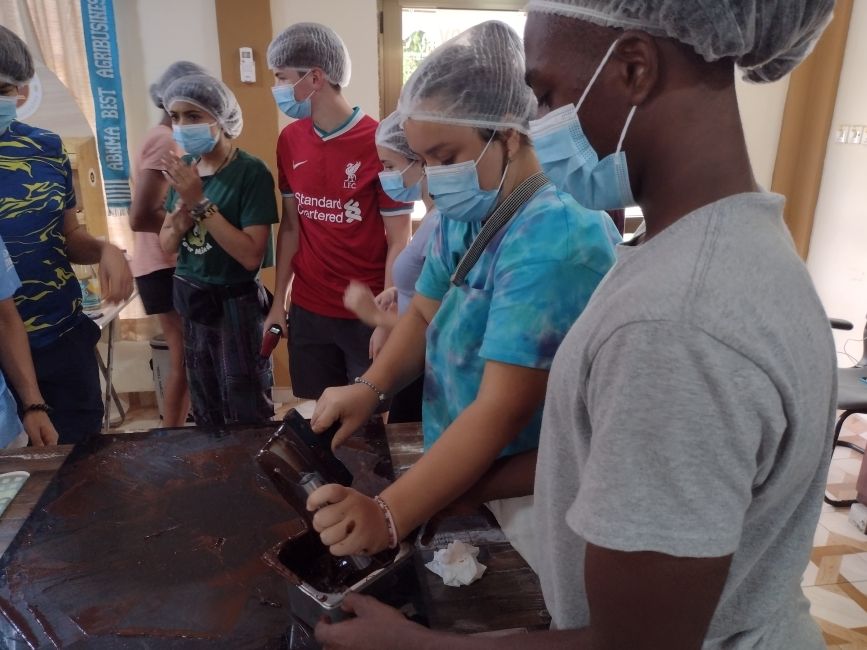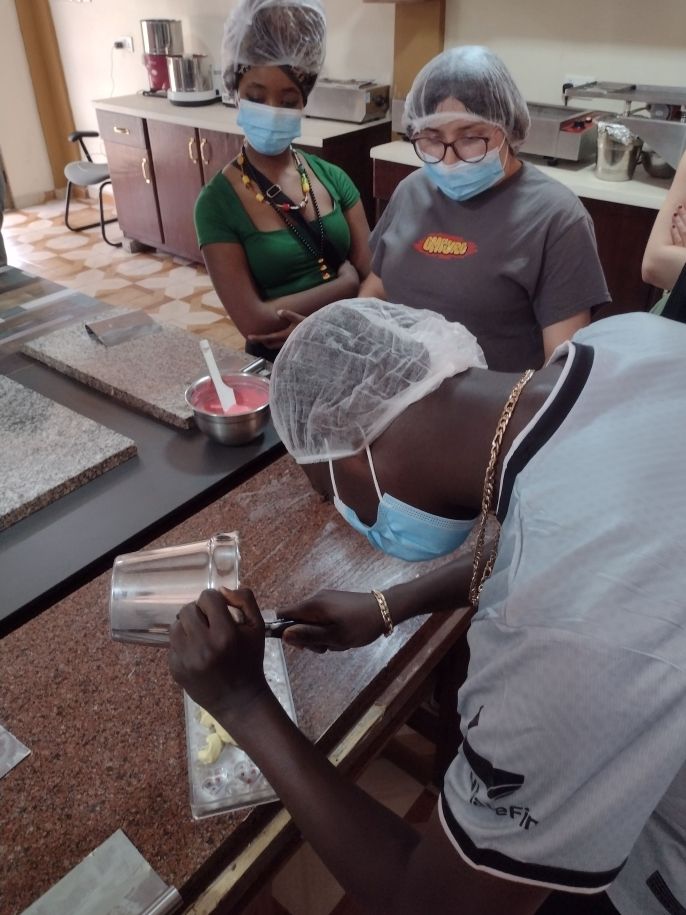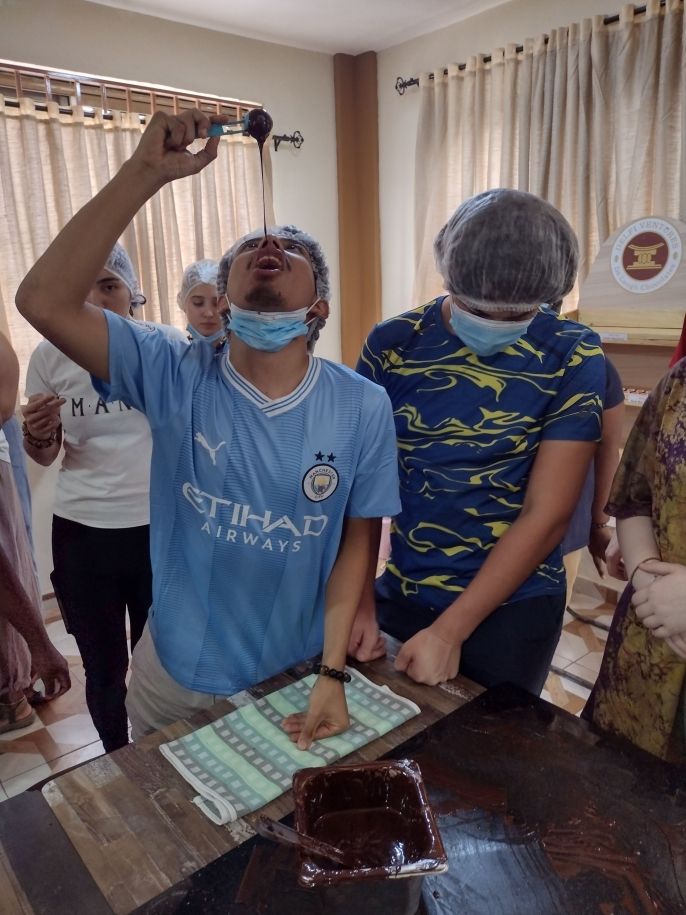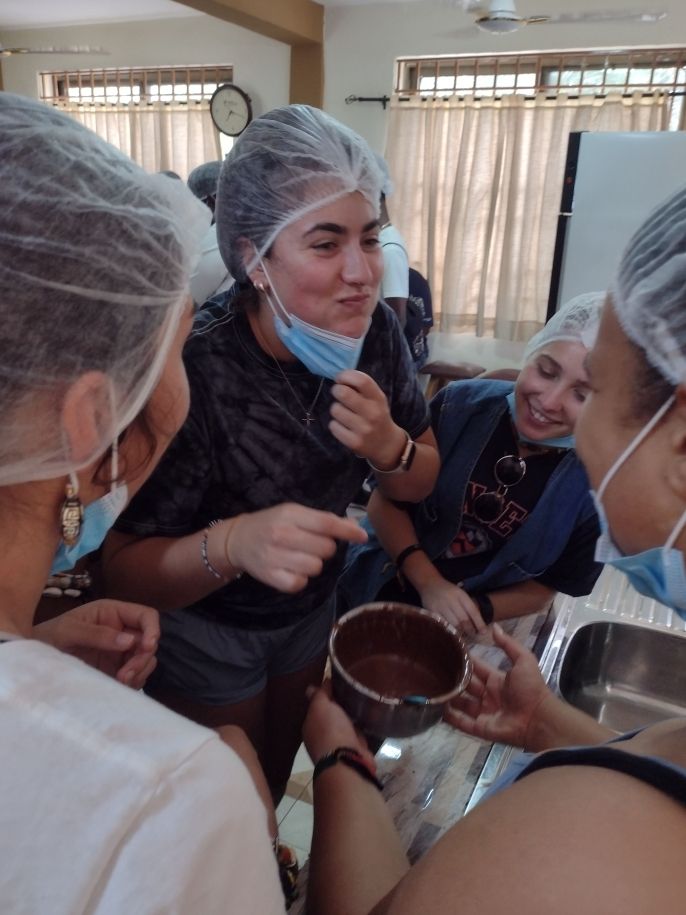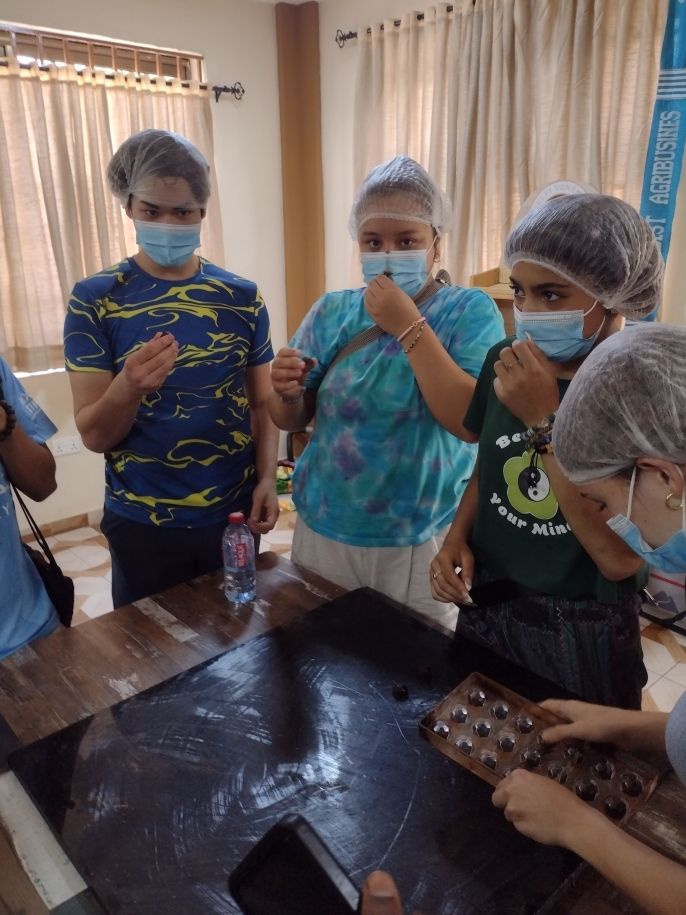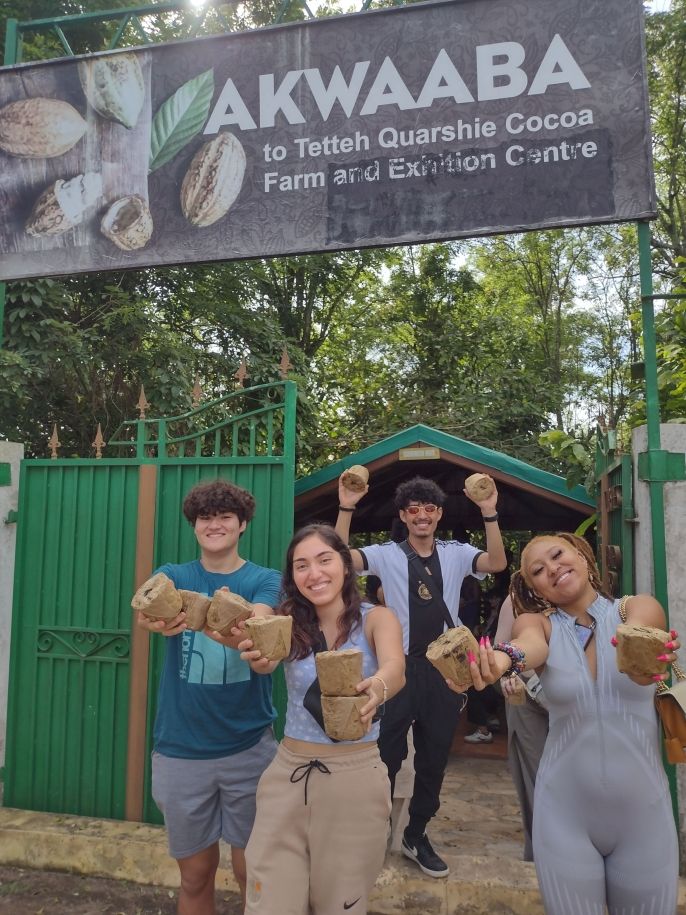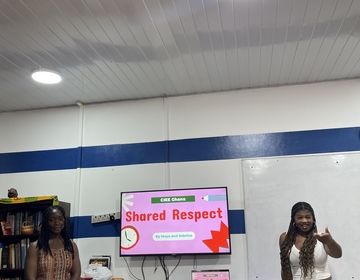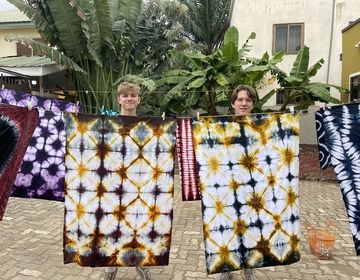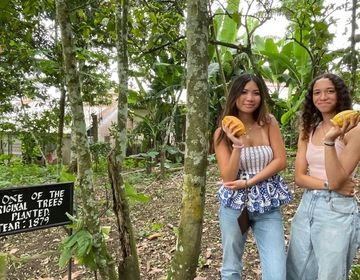Going Cocoa for Chocolate
Have you ever wondered how a cocoa bean turns into the decedent chocolate that we all enjoy? Allow me to take you on a journey from Equatorial Guinea to Ghana with Tetteh Quarshie who discovered the value of the cocoa bean back in the 1870's. It was the year 1879 that Tetteh Quarshie was able to sneak a few cocoa beans back into Ghana via a tool box he carried as a blacksmith. These beans turned into an industry that now is responsible for 30-45% of Ghana's current GDP, exporting $15.3 million of chocolate to the world in 2021.
We visited the original Tetteh Quarshie Cocoa Farm in Mampong Akwapim where the first cocoa trees were planted in Ghana and they still exist today. Here we learned how the cocoa is harvested, fermented and then sold to chocolate producers, while the by-products are turned into the traditional black soap, feed for animals and for plants as a natural fertilizer. Ghana's style of fermentation and technique of only drying the beans in the sun produces some of the highest quality chocolate in the world. Some students got to use the hand tools that cut the pod from the branches, but then we all got to taste the fruity milk membrane that surrounds the bean in the pod. Our guide, Thomas, used the freshly harvested pods to do a demonstration showing us how the farmer ferments and dries the beans. After cutting the pod in half, they lay the beans with the placenta and membrane on a banana leaf, and also cover with banana leaves to assure no air enters. On day 3 the farmer comes and removes the placenta that holds the beans together, leaving the membrane on the beans and puts them back in a heap to create heat and covers. By day 5 they have now changed from white to brown, the farmer mixes beans around and covers again for two more days of fermentation. On day 7 it is now time to let them dry in the sun for at least a week depending on the amount of sun, mixing them around each day. Once they are dried the farmer typically sells the beans in 100lb sacs to the big factories that produce a variety of chocolate products.
Fortunately some plantation owners have been able to keep the business in the family, opening smaller factories and producing their own chocolate such as Delfi Ventures. Delfi Ventures has created a chocolate making eco-tourism experience and offers chocolate making classes alongside their own chocolate production. We were lucky enough to visit the family run operation and have an afternoon full of chocolate, making our own. When we entered the room, the smell was delicious, creating more excitement for the experience ahead. We learned that white chocolate is actually made with the cocoa butter alone and some added sugar for sweetness. The milk chocolate and dark chocolate is the same mixture with chocolate liquor added; the more liquor, the darker the chocolate.
We split into three groups and were able to make white, milk and dark chocolate. They had already pre-mixed the chocolate so the students started by pouring the mixture on slabs, moving it around until each one had the desired temperature needed to set it in the mold. Once they put it in the mold, the molds were placed in the fridge for 15 minutes and we anxiously awaited our own freshly made chocolate. There was leftover mixture that didn't make it into the mold, but it made it into the bellies of all our chocolate lovers. Everyone was very proud of their chocolate creation and was able to take some to go. Some of the chocolate made it back to the hostel, some of it never made it to the bus. We hope sharing this journey of a cocoa bean makes you feel the love of Ghana and all our cocoa farmers worldwide next time you savor some chocolate ice cream or allow chocolate to melt in your mouth and soothe the soul!
Related Posts
Student Project: Shared Respect
During this program, the participants worked in groups to create projects reflecting their experiential learning from the last three weeks. The following is a selection from Sabrina Addo and Maya... keep reading
Tying Up Loose Ends
With only a few days left in our program, we are embracing every opportunity to make lasting memories and reflect on our incredible journey. One of the highlights of this... keep reading
Visiting Ghana’s First Cocoa Farm
Student Blog Takeover: Milo and Anthea visit Ghana's first cocoa farm
